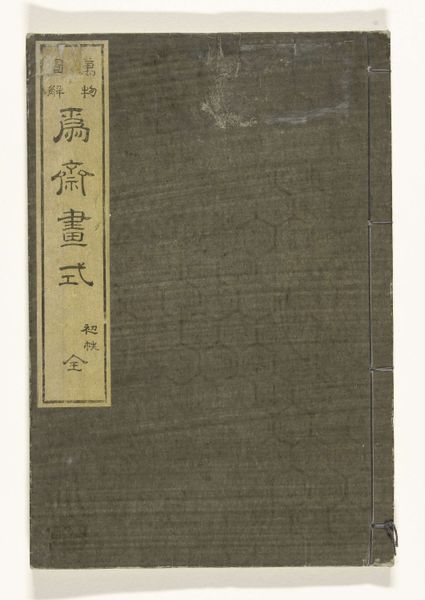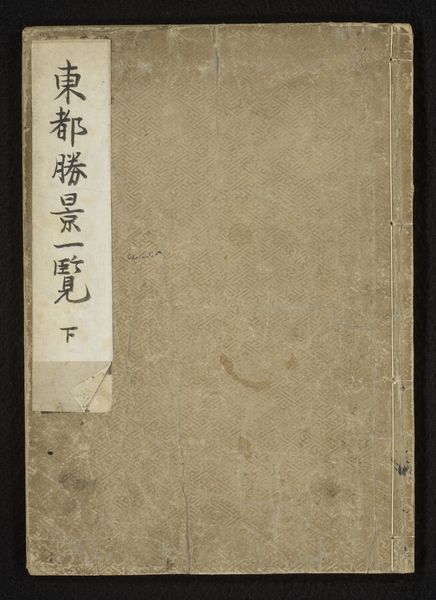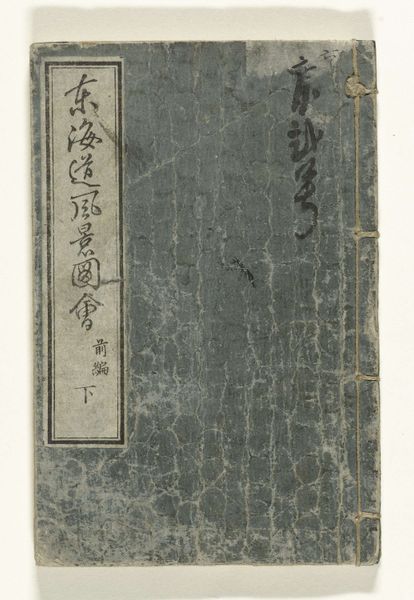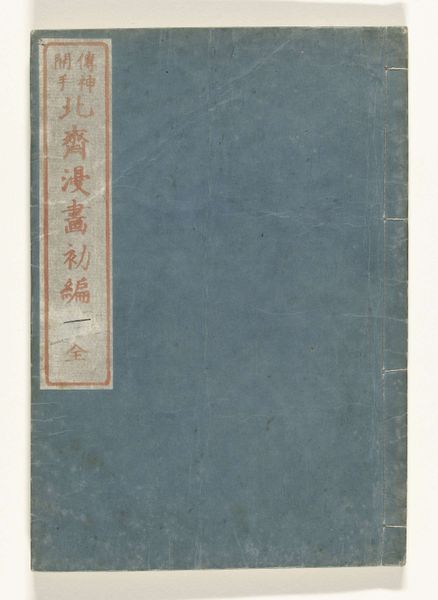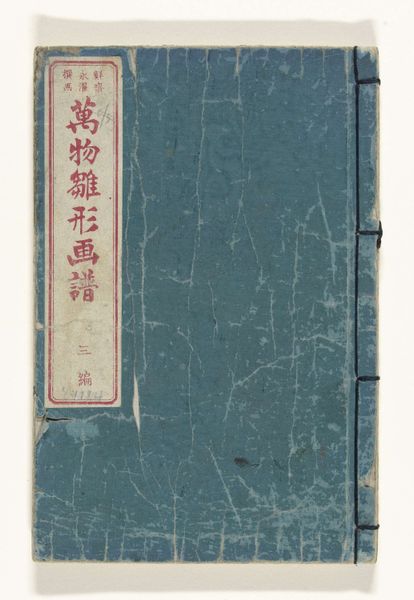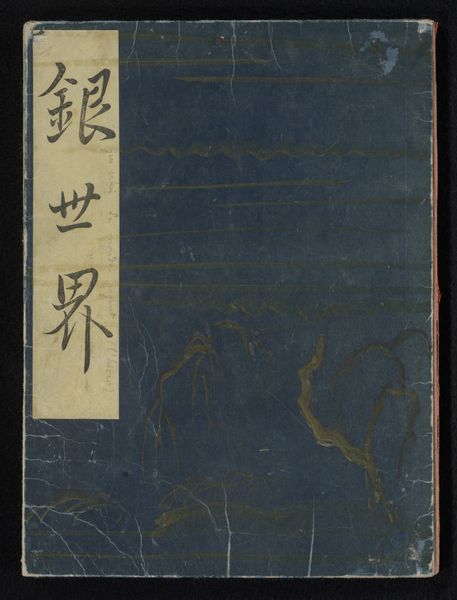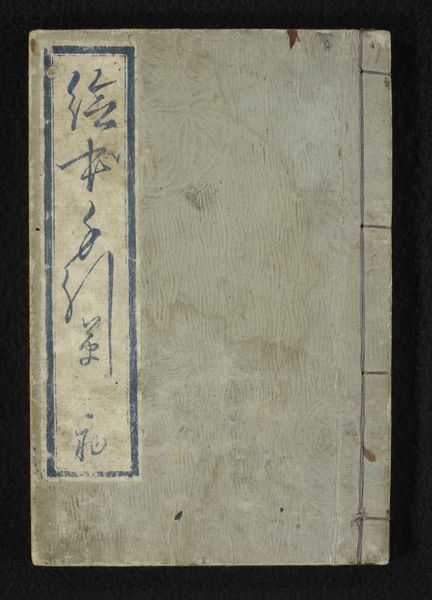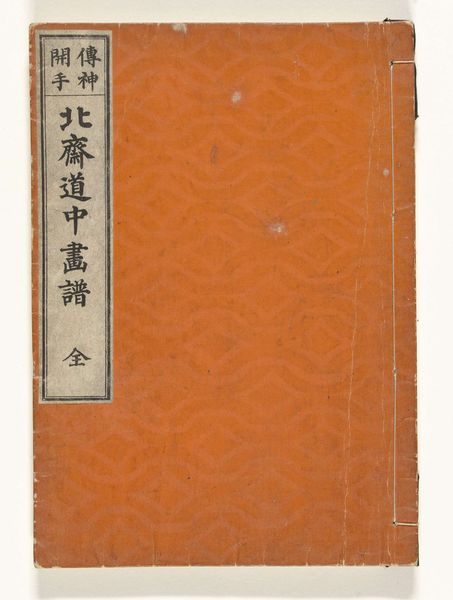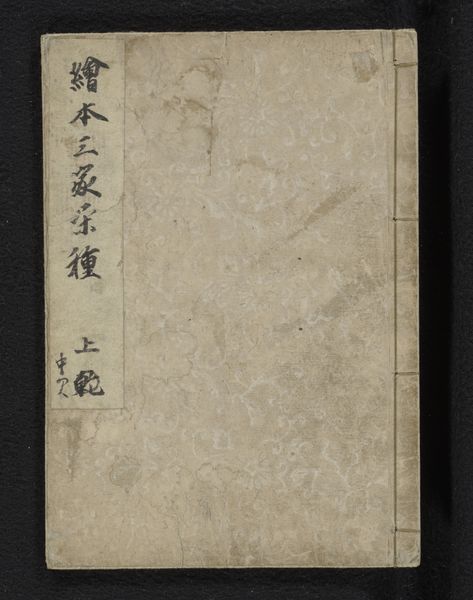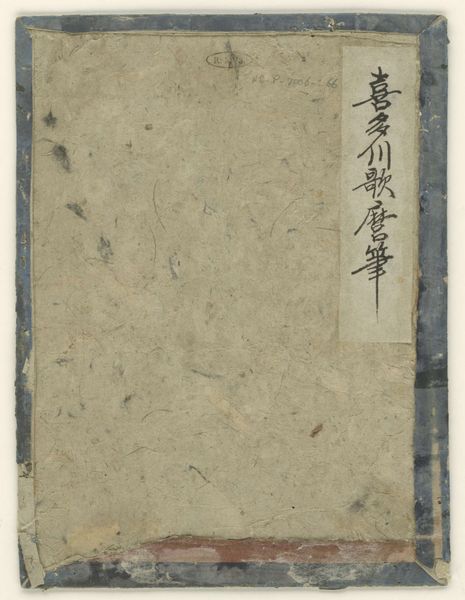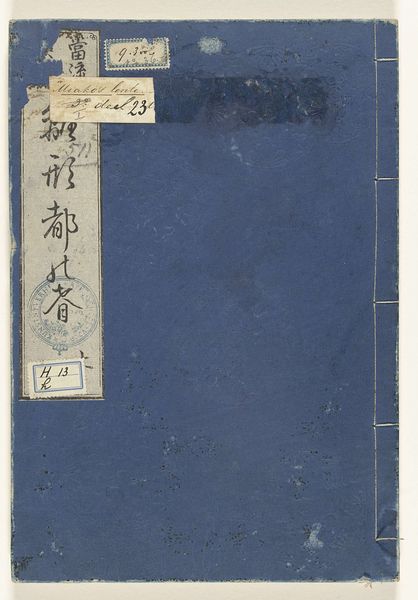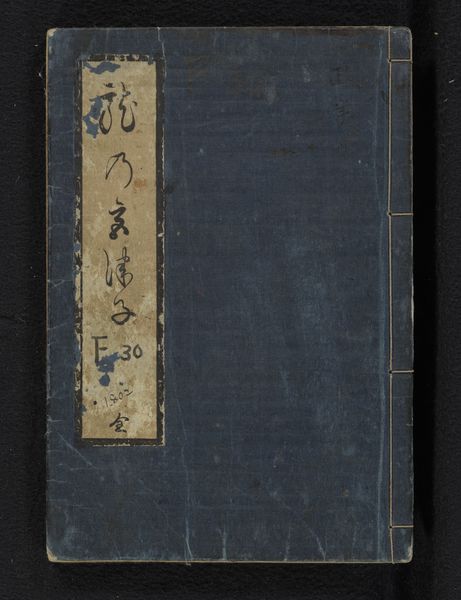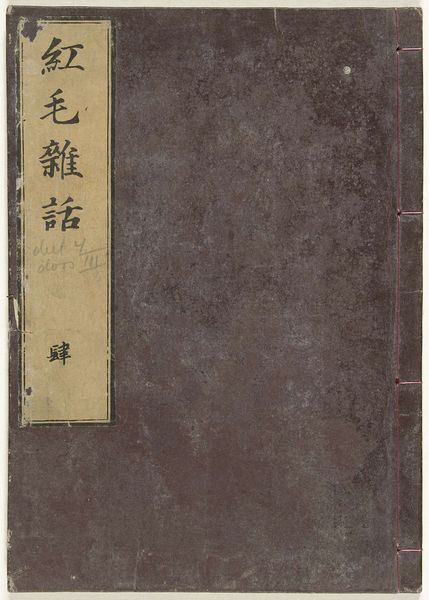
drawing, print, paper, ink, woodblock-print
#
drawing
#
water colours
#
ink paper printed
# print
#
asian-art
#
ukiyo-e
#
paper
#
ink
#
woodblock-print
Dimensions: height 224 mm, width 158 mm
Copyright: Rijks Museum: Open Domain
Curator: Oh, there's something quite wonderful about the intimacy of this object, isn't there? It’s Yashima Gakutei’s "Picture Book of Ichiro," dating back to 1823. A print, ink, and watercolors all dancing together on paper. It’s held here in the Rijksmuseum, whispering stories from another time. Editor: It feels… lived-in. The cover has this mottled texture, almost like aged leather. There's a calmness about the muted tones that makes me think of quiet afternoons spent in a scholar’s study. The texture feels so lovely and inviting too. Curator: Precisely. And considering Gakutei's background—a samurai turned artist immersed in the world of Ukiyo-e—this "Picture Book of Ichiro" isn't merely a collection of images. It’s a portal into a floating world, filled with nuanced beauty and cultural critique. The materiality contributes to this lived-in impression, connecting us across time. Editor: Ukiyo-e often romanticized the lives of courtesans, actors, and everyday city dwellers, yes? This book format allows for a more intimate experience with those images. But does it challenge or perpetuate power structures inherent in that gaze? Who was Ichiro and what narrative is privileged by this artistic rendering? Curator: Ah, a question of narrative and perspective! Gakutei’s unique vision definitely adds complexity to the tradition. He wasn't just documenting the world but filtering it through a unique lens tinged with melancholy and introspection. I can’t help but see that he subtly imbued his pieces with commentary on societal hierarchies. You might say Gakutei gives a voice to characters sidelined from traditional canons. Editor: So, you are saying that by humanizing the everyday, even within the established visual language of Ukiyo-e, Gakutei potentially destabilized the prevailing narratives of his era. It's that subtle gesture, the turning of the lens, that makes this little book resonate. Curator: Absolutely! It's a piece brimming with contradictions and questions, far more engaging than something overtly declarative. Perhaps it reflects Gakutei’s own place, a liminal being of dual identities. Editor: So while it looks aged, there is also a story still alive in it to find... thank you for that subtle and important analysis. Curator: And thank you for pushing me to question how to view the world through different lenses, as it may even lead to some positive discoveries.
Comments
No comments
Be the first to comment and join the conversation on the ultimate creative platform.
